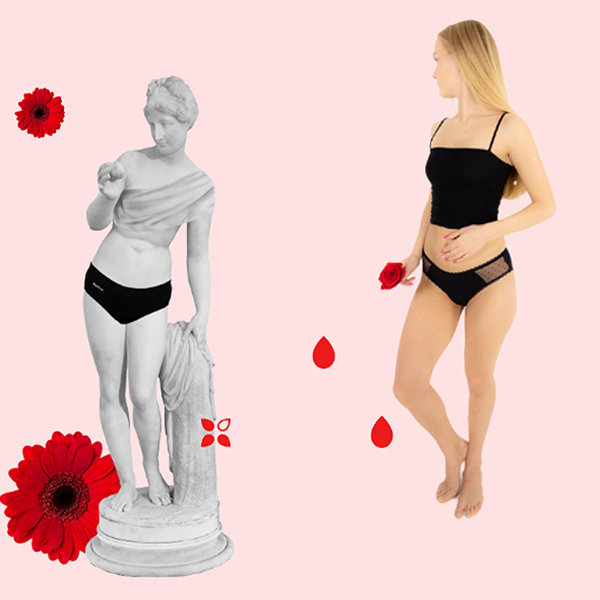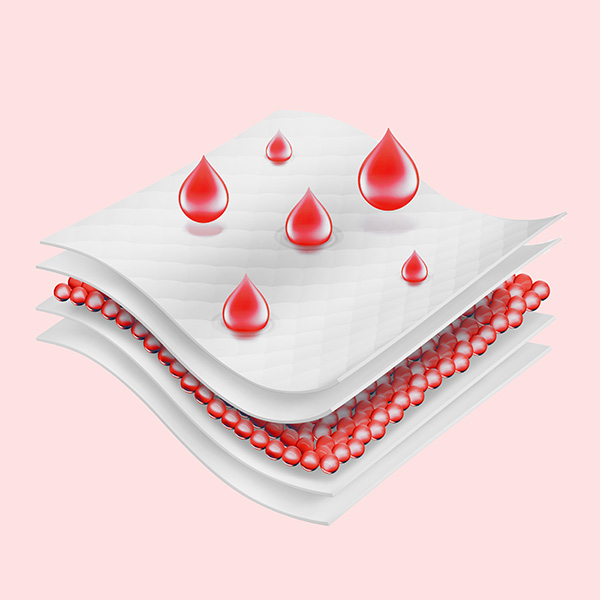The history of feminine hygiene: a return to traditional solutions with modern technology

The history of feminine hygiene is a fascinating journey that dates back thousands of years and has evolved significantly to meet the needs of women today. Throughout history, women have sought comfortable and effective ways to manage their periods, and this search continues. Today, menstrual panties represent one of the most innovative and eco-friendly solutions, offering both comfort and protection while integrating modern technologies with the wisdom of the past.
Humanity has developed fabrics, underwear, washing machines, cleaning agents, and protective layers—all leading to the creation of menstrual panties, a revolutionary product that combines comfort, protection, and easy care.
Ancient times: the first attempts at period management
In ancient civilizations, women used whatever materials were available to manage their menstrual flow. In ancient Egypt, early tampons were crafted from softened papyrus, while women in ancient Greece and Rome used strips of cloth or natural fibers. The idea of using textiles was intuitive, but these rudimentary methods often caused discomfort and irritation while providing limited protection. Without waterproof layers, efficient washing methods, or effective cleaning agents, maintaining hygiene was a significant challenge.
The 19th century: the first steps toward comfort
The 19th century marked the beginning of significant changes with the introduction of new textiles. Women began making reusable cloth pads, which were secured with belts. Though these early solutions were far from perfect, they were a major improvement over previous methods. Despite being cumbersome and requiring frequent washing, they represented an important step forward in menstrual hygiene.
The early 20th century: the rise of pads and underwear
At the turn of the 20th century, the first disposable sanitary pads were introduced, offering women a more convenient alternative to reusable cloths. Although still in their early stages, these pads improved hygiene and made menstrual management easier. Around the same time, underwear design evolved. The once-popular pantaloons became shorter and transformed into what we now recognize as modern underwear, providing a better foundation for menstrual protection.
The 1930s: the introduction of tampons
The 1930s saw a major revolution in menstrual hygiene with the invention of tampons. Offering women a newfound sense of freedom, tampons allowed for greater mobility and the ability to engage in sports and swimming without worry. However, they also came with risks, such as toxic shock syndrome, leading some women to seek alternative solutions.
The rise of menstrual cups
In the same period, American inventor Leona Chalmers patented the first menstrual cup, made from vulcanized rubber. While the concept was promising, the material often caused allergic reactions. It wasn’t until the 1980s that menstrual cups gained widespread popularity with the introduction of medical-grade silicone, making them safer and more comfortable. Despite their eco-friendly benefits and long lifespan, menstrual cups are not the right fit for every woman.
The 21st century: a return to reusable solutions
Today, there is a growing movement toward reusable menstrual products, such as menstrual panties. This shift is driven by multiple factors, including a desire to reduce environmental impact, prioritize comfort, and improve overall health.
A new era of feminine hygiene
Menstrual panties and cups are becoming increasingly popular due to their eco-friendliness and convenience. These modern solutions offer real freedom, allowing women to lead active lives without worrying about leaks or discomfort.
Conclusion
The history of feminine hygiene is a long journey from ancient methods to modern innovations. Disposable pads and tampons played a crucial role in advancing menstrual care, but today, they are gradually being replaced by more sustainable and comfortable alternatives. Menstrual panties and cups represent a new era in feminine hygiene, merging health-conscious choices with environmental responsibility.


